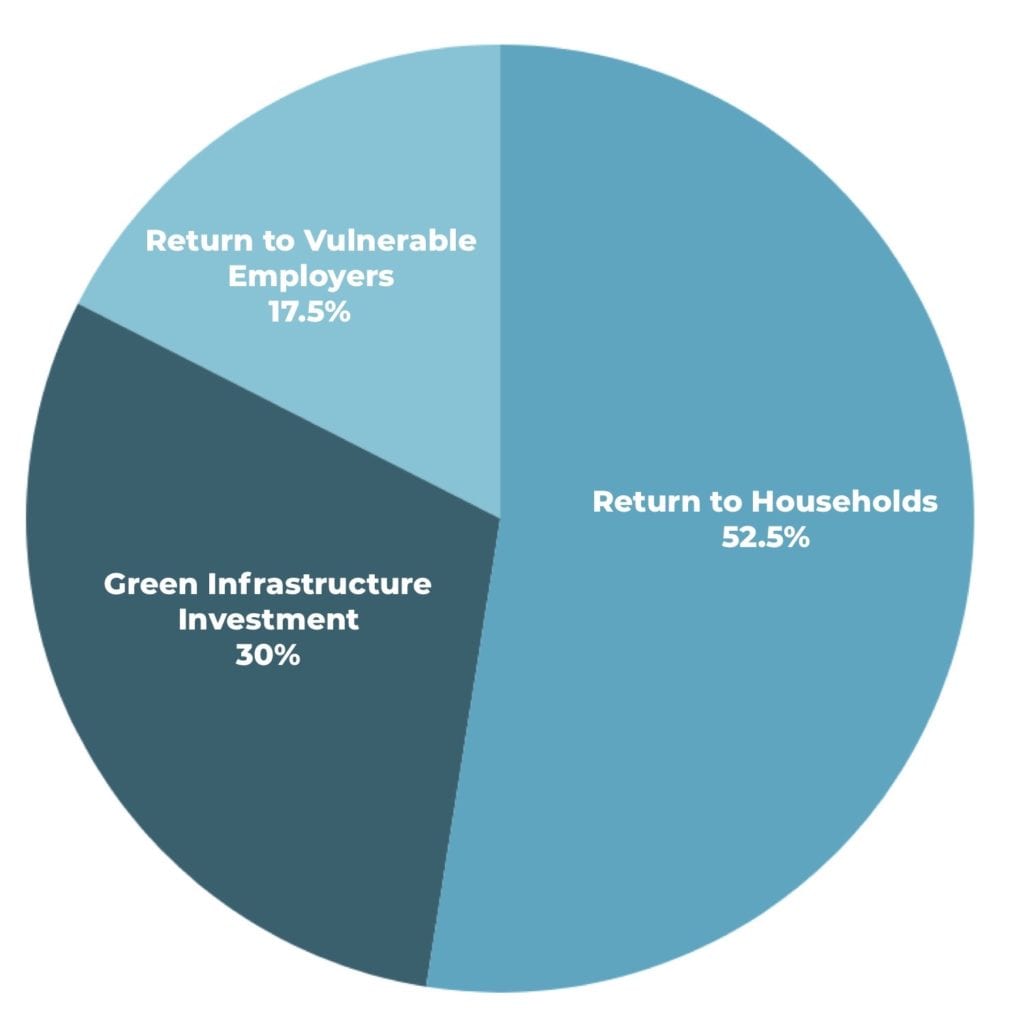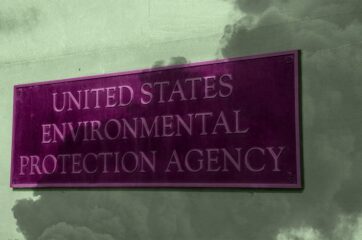Our analysis of Massachusetts Representative Jennifer Benson’s H.2810, An Act to Promote Green Infrastructure and Reduce Carbon Emissions, shows that while it imposes substantial fees on carbon pollution, creating incentives to reduce emissions, it will still financially protect low and moderate income households. The bill also includes protections for vulnerable industries in the state, and devotes a substantial portion of the revenue to a green infrastructure fund (GIF) to invest in further emission reduction solutions and green initiatives.
How does it manage to accomplish all of this? Through careful design by Rep. Benson. The bill devotes 52.5 percent of the revenue to rebates for state residents, weighted toward low and moderate income households. In addition, there are extra rebates going to rural households to account for fees on gasoline, and extra rebates going to low-income households that participate in the Low Income Heating Assistance Program. The result is that the bottom three-fifths (quintiles) of households come out ahead on average, while the top two-fifths come out behind.

Impact of HB 2810 on households by income level
In contrast to Benson’s bill from the 2017-2018 legislative session, rebates to employers are targeted primarily toward those who have high energy bills and face substantial competition from industries in other states or countries that do not have carbon fees (known as “energy intensive and trade-exposed,” or EITE). Industries that have low energy costs and don’t face such competition, such as service and information-based firms, will not receive substantial rebates. This restriction allowed us to limit rebates to employers to 17.5 percent of the revenues, while still providing enough funds to protect vulnerable firms.
This still leaves 30 percent of the revenue to be directed toward a green infrastructure fund or GIF. The fund further enhances the bill’s ability to cut greenhouse gas emissions through funding initiatives and projects in renewable energy, energy efficiency, green transportation, and adaptation to climate change. At the same time, these investments are intended to pursue a just transition for workers and communities that are currently dependent on fossil fuel industries. Additionally, 40 percent of the GIF money must go to low-income residents and communities, ensuring that they will also be able to transition equitably away from fossil fuels.
Distribution of rebates to households, employers, and green infrastructure fund

Distribution of rebates to households, employers, and green infrastructure fund
All in all, H.2810 strikes a careful balance between raising the prices of fossil fuels while protecting all those who could be significantly harmed by doing so. As the fees go up over time, the incentives to switch to renewable energy and energy efficiency will grow, along with the corresponding rebates to households and employers.
Rep. Benson’s bill represents a new maturation in the design of carbon pricing legislation, finding a strong balance between the needs of residents, businesses, and investment in greenhouse gas reduction. This design should allow the fee rates to continue to rise over time, meaning that both the price incentive and the investment in GHG-reducing activities can continue moving us toward a zero-carbon economy.










